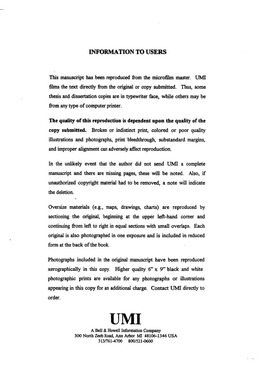| dc.contributor.advisor | Kondonassis, Alexander, | en_US |
| dc.contributor.author | Zhu, Xiangyuan. | en_US |
| dc.date.accessioned | 2013-08-16T12:29:34Z | |
| dc.date.available | 2013-08-16T12:29:34Z | |
| dc.date.issued | 1997 | en_US |
| dc.identifier.uri | https://hdl.handle.net/11244/5451 | |
| dc.description.abstract | This work examines price reforms in both food and agricultural markets within China from 1978 to 1993. This work then found that pragmatic economic reforms in agriculture generally became successful in that they raised the overall income of those peasants comprising more than eighty percent of the total Chinese population. These reforms also increased savings in the rural sector and tax revenues for the presiding governmental infrastructure. Concomitantly, the reforms also stimulated demand for industrial products, which in turn provided new opportunities for more-competitive enterprises. | en_US |
| dc.description.abstract | This work simulated resultant, food and agricultural product prices as a function of various supply and demand factors. During these simulations, the author both formulated and tested several hypotheses regarding certain economic factors that affect price formation. Here, the limitations of the present value model were explored in the context of China's food and agricultural markets. Surprisingly, the results did actually confirm that price formation remains a function of economic fundamentals, thus again proving dependent on supply and demand. As discussed in this work, a time-series Error Correction Model provides one way to acknowledge this crucial fact. The results reported here in therefore suggest a more appropriate way to structure future econometric estimations. | en_US |
| dc.description.abstract | Next, rising agricultural productivity in response to these reforms released labor forces from agriculture, thus entirely replacing collectivism with "peasant capitalism." Both events then resulted in an increased food supply for the rising urban population. Here, rising agricultural productivity contributed significantly to China's strong, overall economic growth, thereby ensuring the reforms' endurance. Above all, the agricultural reforms changed the Soviet pricing system (in food and agricultural markets) and created an almost completely free market-pricing system. These markets, along with their increasing capability to detect relative scarcities and opportunities, have ultimately become the chief guiding force for resource allocation. | en_US |
| dc.format.extent | xx, 158 leaves : | en_US |
| dc.subject | China Economic policy 1976- | en_US |
| dc.subject | Agriculture Economic aspects China. | en_US |
| dc.subject | Economics, General. | en_US |
| dc.subject | Economics, Agricultural. | en_US |
| dc.subject | Economics, Theory. | en_US |
| dc.title | Price reform of the food and agricultural markets in China: 1978-1993. | en_US |
| dc.type | Thesis | en_US |
| dc.thesis.degree | Ph.D. | en_US |
| dc.thesis.degreeDiscipline | College of Arts and Sciences | en_US |
| dc.note | Major Professor: Alexander Kondonassis. | en_US |
| dc.note | Source: Dissertation Abstracts International, Volume: 58-02, Section: A, page: 0530. | en_US |
| ou.identifier | (UMI)AAI9722340 | en_US |
| ou.group | College of Arts and Sciences | |
